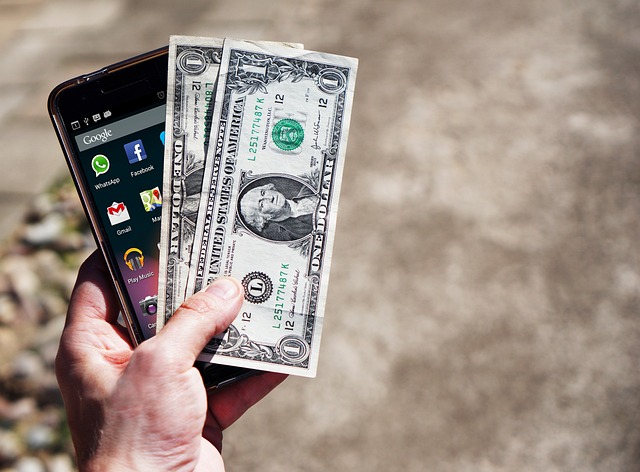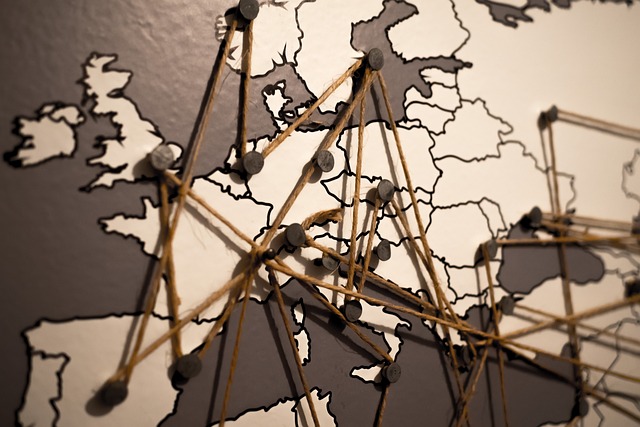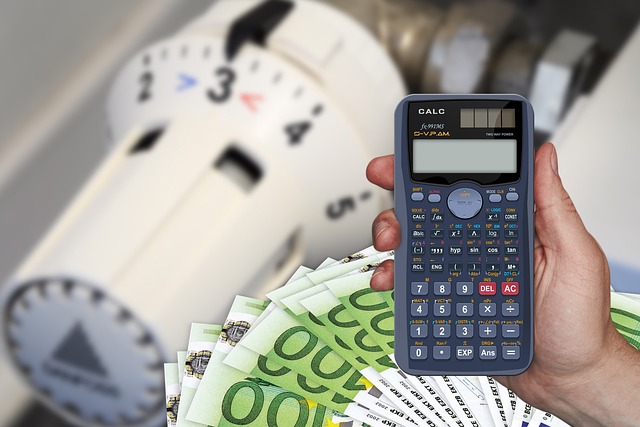In today’s fast-paced, consumer-driven society, the allure of shopping and spending can easily overwhelm our finances. With advertisements constantly vying for our attention and the convenience of online shopping at our fingertips, it’s no wonder that many individuals find themselves trapped in a cycle of overspending. Enter the No-Spend Challenge, a transformative approach that is rapidly gaining traction in personal finance communities across the globe. This challenge encourages individuals to temporarily halt all non-essential spending, prompting them to reflect on their habits and prioritize their financial goals.
The no-spend challenge is not just about abstaining from shopping; it’s a holistic approach to understanding our relationship with money. By committing to this challenge, participants often discover the underlying motivations behind their spending habits. Are you shopping out of boredom? Stress? Or simply because it’s a habit? The challenge provides an opportunity to confront these questions head-on and cultivate a more mindful approach to consumption.
But why is the no-spend challenge becoming increasingly popular? With the rise of minimalism and financial awareness, many are seeking ways to break free from the cycle of consumerism. According to a recent study, the average American spends over $60,000 annually, which highlights the need for conscious spending habits. This staggering statistic serves as a wake-up call for many, prompting them to reevaluate their financial priorities.
As we delve deeper into the benefits of the no-spend challenge, it’s essential to recognize that this journey is not solely about saving money. It’s about fostering a mindset that values experiences over possessions, and understanding that true fulfillment often comes from within rather than from material goods. The challenge can lead to:
- Financial Awareness: By tracking spending habits, participants become more aware of where their money goes, allowing them to identify unnecessary expenses and make informed decisions.
- Savings Accumulation: Many individuals report significant savings during their no-spend challenge. For instance, one participant managed to save $1,500 in just one month by cutting out discretionary spending.
- Mindfulness and Minimalism: The challenge promotes a more mindful approach to consumption, encouraging individuals to embrace a minimalist lifestyle that reduces clutter and stress.
- Creativity and Resourcefulness: Participants often discover innovative ways to enjoy activities without spending money, such as utilizing community resources, engaging in DIY projects, or exploring nature.
This article aims to explore the myriad benefits of undertaking a no-spend challenge and provide you with actionable guidance on how to embark on this rewarding journey. Whether you’re looking to save for a specific goal, pay down debt, or simply gain control over your finances, the no-spend challenge can serve as a powerful tool in your financial toolkit.
Are you ready to take control of your finances and explore the exciting world of the no-spend challenge? By committing to this challenge, you can unlock a wealth of benefits that extend far beyond your bank account. Let’s dive in and uncover how you can start this transformative experience!
Benefits of a No-Spend Challenge
Embarking on a no-spend challenge can lead to profound changes in your financial habits and overall mindset. Here are some of the most significant benefits that participants often experience during this transformative journey:
Financial Awareness
One of the primary advantages of a no-spend challenge is the heightened financial awareness it fosters. By consciously tracking your spending—or, in this case, limiting it—you become more attuned to your financial habits. Here’s how:
- Identify Patterns: You may discover that you spend more on certain categories, like dining out or subscriptions, than you previously thought.
- Spot Unnecessary Expenses: The challenge encourages you to differentiate between needs and wants, allowing you to identify and eliminate unnecessary expenses.
- Develop a Budgeting Mindset: The awareness gained during this period can lead to better budgeting practices in the future.
Savings Accumulation
One of the most tangible benefits of a no-spend challenge is the potential for significant savings. Many participants find that they can accumulate a substantial amount of money in a short period. For example:
Case Study: Meet Sarah, a participant who embraced a month-long no-spend challenge. By prioritizing her essential expenses and cutting out discretionary spending, she managed to save an impressive $2,000 in just 30 days! This money went towards her emergency fund, a clear testament to the challenge’s effectiveness.
Mindfulness and Minimalism
The no-spend challenge also promotes a more mindful approach to consumption. As you engage in this challenge, you’re likely to embrace a minimalist lifestyle, which can lead to a range of benefits:
- Reduced Clutter: By refraining from purchases, you’ll notice a decrease in physical clutter at home, creating a more serene living environment.
- Lower Stress Levels: A minimalist lifestyle can correlate with reduced stress, as you focus more on experiences and relationships rather than material possessions.
- Intentional Living: You’ll cultivate a sense of gratitude for what you already have, fostering a more intentional and fulfilling life.
Creativity and Resourcefulness
Finally, participants often discover a newfound creativity and resourcefulness during their no-spend challenge. This can manifest in various ways:
- Utilizing Community Resources: Many communities offer free resources such as libraries, parks, and community events that participants can enjoy without spending money.
- Engaging in DIY Projects: The challenge encourages participants to get creative, whether it’s cooking at home, crafting, or finding free entertainment options.
- Strengthening Relationships: Engaging in activities with family and friends, such as game nights or potlucks, fosters deeper connections without the need for spending.
In summary, the benefits of a no-spend challenge extend far beyond mere financial savings. From increased financial awareness to fostering a more mindful and creative lifestyle, this challenge can transform your perspective on consumption and help you achieve your financial goals. Ready to experience these benefits for yourself? Let’s explore how to prepare for your no-spend challenge next!
How to Prepare for a No-Spend Challenge
Preparing for a no-spend challenge is essential for ensuring its success. With a little planning and a clear strategy, you can set yourself up for a rewarding experience. Here’s how to get started:
Set Clear Goals
Before diving into your no-spend challenge, it’s crucial to define your personal objectives. Setting clear goals provides direction and motivation throughout the process. Consider the following:
- Define Your Purpose: Ask yourself why you’re undertaking this challenge. Are you aiming to save a specific amount of money, reduce debt, or simply become more mindful of your spending habits?
- Specific Targets: Set measurable goals, such as “Save $500 by the end of the month” or “Cut down my dining out expenses by 75%.” These targets will keep you focused and motivated.
- Time Frame: Decide how long your no-spend challenge will last. Whether it’s a week, a month, or longer, having a clear timeframe will help you stay committed.
Create a Budget
Creating a budget is a vital step in preparing for your no-spend challenge. It helps you understand your necessary expenses versus discretionary spending. Below is a simple budgeting template to help you get started:
| Category | Necessary Expenses | Discretionary Spending |
| Housing | $____ | – |
| Utilities | $____ | – |
| Groceries | $____ | – |
| Transportation | $____ | – |
| Dining Out | – | $____ |
| Entertainment | – | $____ |
| Subscriptions | – | $____ |
By filling out this table, you can visualize where your money goes and identify areas to cut back on during the challenge. Remember to revisit your budget regularly to track your progress!
Plan Ahead
Planning is key to avoiding impulse spending during your no-spend challenge. Here are some strategies to help you plan effectively:
- Social Events: If you have social commitments, plan free or low-cost activities with friends and family. Suggest potlucks, game nights, or outdoor adventures instead of dining out.
- Meal Prep: Organize your meals for the week to avoid last-minute takeout decisions. Consider batch cooking and preparing meals in advance to save both time and money.
- Explore Free Activities: Research local events, community centers, and public parks that offer free activities. Look for free workshops, concerts, or festivals to enjoy without spending a dime.
By setting clear goals, creating a budget, and planning ahead, you’ll be well-equipped to tackle your no-spend challenge with confidence and enthusiasm. Now, let’s explore the steps to actually start your challenge!
Steps to Start Your No-Spend Challenge
Now that you’ve prepared for your no-spend challenge, it’s time to take the plunge! Follow these steps to kickstart your journey towards mindful spending and financial freedom:
Choose a Time Frame
One of the first decisions you’ll need to make is how long your no-spend challenge will last. The duration can significantly influence your experience, so consider the following options:
- One Week: Perfect for beginners, a week-long challenge allows you to dip your toes into the no-spend lifestyle without a long-term commitment.
- One Month: A month gives you ample time to assess your spending habits and start forming new, healthier ones. It’s a great option for those looking to make a more substantial change.
- Custom Duration: Feel free to choose a duration that fits your lifestyle! Whether it’s two weeks or six weeks, select a timeframe that feels achievable and motivating.
Communicate with Others
Informing your family and friends about your no-spend challenge is crucial for garnering support and understanding. Here’s why:
- Build a Support System: Sharing your goals with loved ones can create a support network. They can help hold you accountable and may even join you in the challenge!
- Set Expectations: By explaining your challenge, you can avoid misunderstandings when you decline invitations to expensive outings or suggest alternative, budget-friendly activities.
- Encourage Dialogue: Discussing your experience can lead to insightful conversations about finances, prompting others to reflect on their own spending habits.
Track Progress
Tracking your progress is essential for self-reflection and motivation throughout your no-spend challenge. Here are some effective methods:
- Journaling: Keep a dedicated journal to document your feelings, challenges, and successes. Write about what you’ve learned each day, and reflect on how your spending habits have changed.
- Mobile Apps: Consider using budgeting apps like Mint or GoodBudget to track your spending and savings in real-time. These tools can help visualize your financial progress.
- Weekly Reviews: Set aside time each week to review your journal or app entries. Assess what worked well, what was challenging, and how you can improve moving forward.
Tracking your progress will keep you motivated and provide valuable insights into your spending habits. Remember, self-reflection is key to making lasting changes!
With these steps in place, you’re now ready to embark on your no-spend challenge. Embrace the journey ahead, and enjoy discovering a more mindful way of living!
Tips for Staying Motivated During the Challenge
Maintaining motivation throughout your no-spend challenge can be one of the biggest hurdles. However, with the right strategies in place, you can keep your spirits high and your goals in sight. Here are some tips to help you stay motivated during your journey:
Join a Community
Finding a supportive community can make all the difference in your no-spend challenge experience. Here’s how to tap into the power of collective motivation:
- Online Forums: Websites like Reddit’s Frugal subreddit or Facebook groups dedicated to no-spend discussions can provide invaluable support. Engage with others who are on the same journey, share tips, and celebrate successes together.
- Local Meetups: Look for local financial literacy groups or frugal living meetups. Connecting with others in person can foster deeper discussions and strengthen your resolve.
- Accountability Partners: Consider finding a friend or family member who is willing to join you in your challenge. Having someone to share your experiences with can boost motivation and keep you accountable.
Celebrate Small Wins
Every step forward deserves recognition! Celebrating small victories can keep your spirits high and reinforce positive behavior. Here’s how to do it:
- Set Milestones: Break your challenge into smaller, achievable goals, such as saving a certain amount each week. When you hit a milestone, treat yourself to a small reward that doesn’t involve spending money, like a day out in nature or a movie night at home.
- Share Achievements: Post your successes in your community groups or social media. Sharing your journey not only motivates you but also inspires others!
- Reflect on Your Progress: Keep a visual representation of your savings, such as a chart or a savings jar. Watching your savings grow can be incredibly motivating.
Reflect on Experiences
Taking time to reflect on your experiences throughout the challenge can provide clarity and insight. Consider this powerful quote from Jane Doe, who completed a no-spend challenge:
“The no-spend challenge opened my eyes to my consumption habits. I realized how much I valued experiences over things, and I found joy in simple pleasures I had overlooked before!”
Reflecting on your journey not only helps in understanding your spending habits but also in appreciating the changes you are making. Here are some ways to incorporate reflection into your challenge:
- Daily Journaling: Spend a few minutes each day writing about what you experienced, what you learned, and how you felt. This practice can enhance self-awareness.
- Weekly Reviews: At the end of each week, dedicate time to review your journal entries and assess your progress. Ask yourself questions like, “What was challenging this week?” and “What did I enjoy the most?”
- End-of-Challenge Reflection: Once your challenge is complete, take time to reflect on your entire experience. What did you learn? How will these lessons affect your future spending habits?
By implementing these tips, you’ll not only stay motivated during your no-spend challenge but also cultivate a deeper understanding of your financial habits. Embrace the journey, and remember that every small step counts!
FAQ Section
As you embark on your no-spend challenge journey, you might have some questions. Here are some common queries to help clarify what a no-spend challenge entails and how to navigate it effectively:
What is a no-spend challenge?
A no-spend challenge is a personal finance initiative where participants commit to not spending money on non-essential items for a predetermined period. This challenge aims to boost awareness of spending habits, promote savings, and encourage more mindful consumption. It can vary in duration, ranging from a few days to several months, depending on individual goals.
Can I still spend money on essentials?
Absolutely! Essential spending is generally defined as necessary expenses that support your basic needs and well-being. Here’s a breakdown of what typically falls under essential spending:
- Housing: Rent or mortgage payments, property taxes, and necessary home repairs.
- Utilities: Basic services like electricity, water, gas, heating, and internet.
- Groceries: Food and drink purchases are considered essential, though try to focus on budgeting for basic necessities and avoid indulging in unnecessary treats.
- Transportation: Fuel, public transport fares, and essential vehicle maintenance.
- Health Care: Medical expenses, prescriptions, and insurance premiums.
Remember, the goal is to minimize discretionary spending, allowing you to focus on what truly matters without compromising your basic needs.
What if I slip up during the challenge?
Firstly, don’t be too hard on yourself! Slips can happen, and it’s all part of the learning process. Here are some reassuring tips for getting back on track after an unplanned purchase:
- Reflect: Take a moment to analyze what led to the slip-up. Was it an impulse buy or a lack of preparation? Understanding the trigger can help you avoid similar situations in the future.
- Reset Your Mindset: Remind yourself of your goals and the reasons you started this challenge. Focus on the positive changes you’ve already made rather than dwelling on the mistake.
- Adjust Your Plan: If the slip-up was significant, consider extending your no-spend challenge for a few additional days or weeks to help regain your focus.
- Learn and Move On: Use this experience as a learning opportunity. Every challenge presents a chance to grow, so embrace the journey and keep pushing forward!
By addressing these common questions, you’ll feel more prepared and confident as you dive into your no-spend challenge. Remember, every step you take toward mindful spending is a step toward greater financial freedom!
Conclusion
As we wrap up our exploration of the no-spend challenge, it’s clear that this mindful approach to spending offers numerous benefits that can positively impact your financial health and overall lifestyle. By participating in a no-spend challenge, you can:
- Enhance Financial Awareness: Gain insight into your spending habits and identify areas for improvement. This challenge encourages you to scrutinize every purchase, helping you understand what you truly need versus what you want.
- Boost Savings: Accumulate significant funds that can be redirected toward savings goals or debt reduction. For instance, many participants report saving hundreds of dollars in just one month, which can be a game-changer for your financial situation.
- Encourage Mindfulness: Shift your focus towards minimalism and intentional living, reducing clutter and stress. By consciously choosing what to spend your money on, you can cultivate a more fulfilling and less chaotic lifestyle.
- Ignite Creativity: Discover new ways to enjoy life by engaging in free activities and utilizing community resources. From DIY projects to exploring local parks, the challenge often leads to unexpected and enriching experiences.
Taking the first step towards a no-spend challenge can be daunting, but the rewards are well worth the effort. It’s not just about saving money; it’s about transforming your relationship with money and consumption. As you embark on this journey, consider setting clear goals and creating a budget to guide your efforts. This preparation will help you stay focused and motivated throughout the challenge.
Moreover, remember that you are not alone in this endeavor. Many individuals have successfully completed their own no-spend challenges and have shared their stories online. Joining a community, whether it’s through social media platforms or local groups, can provide you with the support and encouragement you need. Sharing your experiences and learning from others can make the process even more rewarding.
We’d love to hear from you! Have you ever participated in a no-spend challenge? What insights or tips would you like to share with others? Please leave your experiences and thoughts in the comments section below! Your stories can inspire others to take the plunge and start their own journey towards financial freedom.
To inspire your journey, here’s a powerful quote by Dave Ramsey:
“The goal isn’t more money. The goal is living your life on your terms.”
May this motivate you to take control of your finances and embark on a fulfilling no-spend challenge!
In conclusion, the no-spend challenge is more than just a temporary financial strategy; it’s a lifestyle shift that encourages you to be more intentional with your money. By embracing this challenge, you can unlock a wealth of benefits that extend beyond your bank account. So, are you ready to take the leap? Start today, and you might just find that the journey is as rewarding as the destination.










